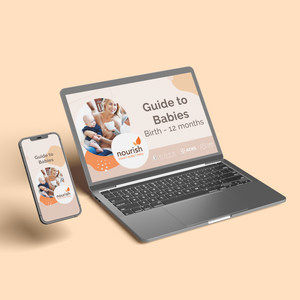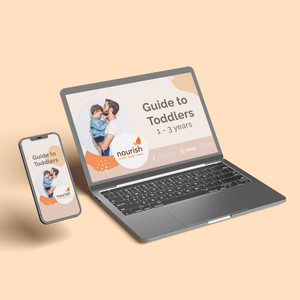Nappy rash is most often a result of when a baby's skin is contact with a wet or dirty nappy for too long. Though the definition of ‘too long' can vary a lot from one baby to other and the sensitivity of their skin can be a factor, whether the baby is well or unwell may also need to be taken in into consideration.
Some babies will get a lot of nappy rash, while others hardly get it at all and sometimes it just occurs no matter how diligent you are at changing them regularly.
Caused by germs in faeces, urine and on clothing (including nappies) which creates ammonia on the baby's skin, which can burn and irritate, when a nappy or other cloth (especially a stiff cloth nappy) then rubs on the angry skin, it is further aggravated and can make bubs quite uncomfortable and even upset.
Dressing babies in lots of layers especially in plastic pants over their nappies can prevent airflow and hide the need for a change, so the skin stays wet for a longer time without detection. If a baby is unwell, particularly with diarrhea, their skin may become more sensitive. Other possible causes include beginning a new food, teething, and an allergic reaction to the chemicals in disposable nappies or an infection on the skin such as thrush - which can all exacerbate the rash.
So how can we nourish nappy rash? Here are 10 handy tips:
- Firstly, try to minimise the causes as much as possible by changing nappies regularly. This way the skin is kept as fresh and clean as possible.
- Allow for some “nappy free” time. This way the air can circulate around the area and potential irritants are not constantly cradled to the skin.
- Disposable nappies with absorbent linings will keep wetness away from the skin, which may help.
- When wiping or washing baby's bottom, to do it very gently so you don't rub the skin, and ensure skin is thoroughly clean and dry (check in all of the folds).
- Skin wipes often have alcohol in them and this can cause further pain and discomfort on damaged skin, so perhaps try using alcohol –free, preferably natural and organic, wipes.
- Using a nappy cream or barrier lotion with added calendula to treat and soothe irritated skin.
- Try only squeezing a small amount of your nappy cream onto your arm and using the tips of your fingers, then dab the lotion and pat over the nappy area you wish to cover, as rubbing can cause further irritation by creating friction rather than calming the area. Particularly if they are irritated or cracked.
- Steer clear of baby powders - they can be very drying to an infant's skin.
- Wash cloth nappies in laundry liquids which are labeled for sensitive skin.
- See your doctor for any rash to be sure what it is and how it should be specifically treated.
About the Author:
Michelle Vogrinec is a mother of three and creator of GAIA Natural Baby. An avid researcher with an interest in preventative health and sustainable living, she is passionate about the environment, complementary medicine and growing fresh, organic fruit and veggies to support her family in maintaining a healthy lifestyle.
Our Products
-

01. Guide to a Healthy Pregnancy
$55 -

02. Positive Birthing Course
$55 -

03. Infant Feeding Guide
$55 -

04. Baby Sleep Guide - First 12 Months
$55 -

05. Toddler Parenting Course 1 - 3 Years
$55
-
 When to Start Antenatal Classes?
When to Start Antenatal Classes?
Becoming a parent is an incredible milestone, but it comes with a host of changes that can be daunting, especially for first time parents. Antenatal classes are all about offering expectant parents the education they need to make informed decisions, look after their bodies and care for their newborn babies. While you probably already have a long list of things you need to accomplish during your pregnancy, it’s a good idea to make time to attend antenatal classes.
-
 Development Milestones 4-8 Months
Development Milestones 4-8 Months
As they reach the middle of their first year, you'll start to see bigger leaps in their growth and ability!
In this article, we’re going to discuss your baby’s developmental milestones between 4-8 months, and what you can expect along the way.





 When to Start Antenatal Classes?
When to Start Antenatal Classes?
 Development Milestones 4-8 Months
Development Milestones 4-8 Months








